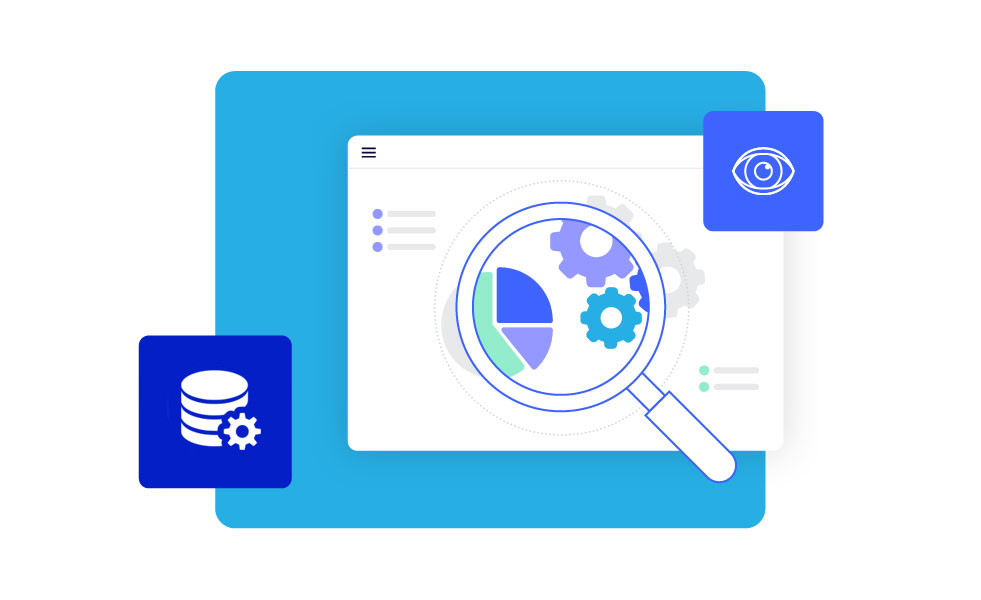What Customer Lifetime Value Is and How to Boost It

Business is about making money. Not all ecommerce loyalty metrics reflect it, but customer lifetime value (CLV) does. That’s why it’s special: you can put a dollar value on your customer relationships. And by tracking the ups and downs of CLV over time, you can directly monitor how loyalty contributes to your bottom line.
That’s important because building loyalty is one of the biggest factors in succeeding in ecommerce today. Yet shoppers have higher standards than ever, meaning you’ll need to do all you can to satisfy your customers. When they’re happy, they’ll buy from you time after time and become your biggest cheerleaders, helping to grow your revenue through word of mouth and on social media.
Without metrics like CLV in place, you’ll struggle to know whether your loyalty-building efforts are succeeding or not. But when CLV is rising, you’ll know you’re pleasing your customers because they’ll show support with their wallets.
What is customer lifetime value?
Customer lifetime value (CLV) is the amount of gross revenue your business can expect from an average customer across the duration of their relationship with your company. CLV is sometimes known as LTV (lifetime value) or CLTV.
There are a variety of ways to calculate customer lifetime value, ranging in complexity. For example, some account for the customer acquisition cost (CAC), and some don’t. But all offer a starting point for building a strategy to boost revenue.
When using CLV, look at both the average gross revenue and the average profit margin of customers. While average gross revenue is useful for tracking the size of transactions over time, the average profit margin will let you know if these transactions add up to a sufficiently profitable business. By comparing the two, online retailers can learn about the strengths and weaknesses of their marketing efforts.
Judging what makes a good CLV is highly contextual. Metrilo research indicates that the average for ecommerce is $168 across all verticals. However, what makes for a good CLV will depend on both your business goals and your industry. It may be hard to reach $168 if your store only sells low-cost decorative phone cases. Alternatively, an appliance business like Blackstone could blast past that figure in a single below-average-value transaction.
The point is: you’ll need to develop your own CLV benchmark for success.
Why is customer lifetime value important?
CLV is an important metric because it’s arguably the most reliable measure of the strength of your relationships with customers.
It’s based on actual customer behavior
Customer lifetime value comes as close as reasonably possible to directly measuring customer loyalty due to its focus on actual dollars spent. Other loyalty metrics like net promoter score (NPS) and customer satisfaction score (CSAT) rely on customers to give an accurate and honest score to measure loyalty.
However, CSAT and NPS will always be limited by their abstract nature — meaning the numbers they give might not measure what they claim to in the real world.
That’s because asking customers to put a number on how likely they are to recommend a product to a friend, relative, or colleague at some point in the future leaves a lot of room for interpretation. One customer might think a “7” means they were quite happy with the product and would recommend it. However, another customer might be the kind of person who defaults to giving a high score like a “10," only giving a lower score if they are genuinely dissatisfied in some way.
There are other risks, too. Maybe you catch a customer on a bad day, so they’ll give a low score no matter how good the experience was. Or maybe they misread the question entirely or accidentally select the wrong answer.
The variety of ways customers can interpret numbers means that metrics like net promoter score and customer satisfaction score may not always be the most reliable indicators of customer loyalty. That’s not to say they can’t be used effectively, but care must be taken to help make the data as meaningful as possible.
On the other hand, CLV is based on actual behavior rather than opinions or what customers say they might do. CLV also doesn’t rely on the (likely incorrect) assumption that the subset of your customers willing to take a survey about their experiences is representative of all your customers.
Instead, CLV is based on loyal customers parting with real dollars — a more concrete indicator of commitment. As a result, decision-makers can be more confident that the metric reflects reality and improve forecasting.
CLV helps refine a strategy fit for the current market
CLV is an ideal metric to use as you refine your marketing strategy to reflect the current retail environment because it incentivizes business practices that put your best customers first.
The direction your marketing takes will be guided by the objectives you set. Often these objectives are defined as performance against specific metrics like CLV in the form of key performance indicators (KPIs). The right metrics incentivize choices in-line with the needs of the current market.
For example, online ad costs are high. Research by Marketplace Pulse identified that in June 2020, the cost per click (CPC) for Amazon advertising was just $0.79. The same study found that even with the majority of lockdowns having ended and consumers consequently less dependent on online shopping, that figure had risen to $1.20 by June 2021.
CLV is an excellent metric when higher ad costs are pushing customer acquisition costs (CAC) upward. In working to improve CLV, marketers must focus on generating more profit from existing customers while avoiding spending more to acquire them. As a result, marketers who have adopted a CLV-focused strategy circumvent one of the chief obstacles to a profitable ecommerce business in the current market: high ad costs.
But CLV also has other benefits for marketing strategy. If your online store has different groups of customers, you can look at the CLV for each group. If it turns out you have certain segments with low CLVs, you can try to apply the lessons you learn from high CLV groups to those weaker segments or pivot away from them in favor of high-CLV groups entirely.
CLV incentivizes customer-focused practices

Shoppers are less forgiving and have higher expectations of ecommerce businesses than before. Amazon, in particular, has raised customer expectations with its combination of value-added services (documented in academic research). By adopting CLV as a primary metric, you gain another way of knowing whether you’re meeting your customers’ raised standards.
Steps that increase CLV tend to nurture a strong relationship with customers and reduce churn. Such steps include getting to know your customers through detailed research and analysis — their demographics, spending habits, history with the company, and so on.
CLV-boosting practices like offering modern product protection, 24-hour customer support, and making product development decisions based on customer feedback also prioritize customer experience (CX), helping to keep your business competitive in the current environment.
How to Calculate Customer Lifetime Value?
For customer lifetime value calculation, you first need to know your average purchase value. Next, you’ll calculate customer value and average customer lifespan before finding your CLV. After that, you’ll be ready to calculate CLV for different customer segments before adjusting your strategy to increase the lifetime value of your shoppers.
Calculating gross CLV
Gross CLV is useful if you want to know the average amount of money a typical customer will spend on your site across their lifetime shopping with you. This metric does not take into consideration how much of that translates to profit.
Step 1: Calculate APV
Calculating CLV begins with calculating your average purchase value (APV), which represents the amount a typical purchase would be. To calculate APV, divide your total revenue over the time period you’re interested in by the total number of purchases within that period.
Average Purchase Value = Total Revenue / Number of Purchases
Step 2: Calculate Customer Value
Your next step toward finding your CLV is to calculate customer value, which represents the average amount a typical customer would spend at your business without accounting for customer lifespan. Because customer value doesn’t account for customer lifespan, it isn’t as reflective of reality as CLV, and you shouldn’t stop with it.
To calculate customer value, multiply the APV you calculated in step one by the average number of purchases per customer.
Customer Value = Average Purchase Value * Average No. of Purchases per Customer
Remember to only use data from the time period you used in step one. Otherwise, you risk making your final number inaccurate.
For example, suppose Baby Brezza’s APV is $80, and the average number of purchases per customer is 3. Customer value would be $240.
Step 3: Calculate Average Customer Lifespan
Before you can know how much an average customer will spend across their lifespan with your business, you’ll need to know what the average customer lifespan (ACL) actually is. To calculate ACL, you’ll add all of your customer lifespans – from date of first purchase to last purchase – together, and then divide that figure by your total number of customers.
Average Customer Lifespan = Sum of Customer Lifespans / Total Customers
Returning to our Baby Brezza example, let’s assume that the sum of customer lifespans is 180,000 years, and they have a history with 90,000 customers. 180,000 divided by 90,000 is 2, resulting in an average customer lifespan of two years.
Step 4: Calculate CLV
With customer value and average customer lifespan in hand, you can now calculate gross CLV. Multiply customer value by average customer lifespan to find your CLV.
Customer Lifetime Value = Customer Value * Average Customer Lifespan
For our hypothetical Baby Brezza example, multiplying their customer value of $240 by their average customer lifespan of two years would result in a CLV of $480.
How to improve customer lifetime value
To improve customer lifetime value (CLV), focus your strategy on steps where you provide the best service to all customers as individuals. At the same time, bend over backward to address the core needs of your customer base. Both tactics should support a higher retention rate, which directly impacts CLV.
Use an integrated customer data platform (CDP)

Use an integrated customer data platform (CDP) to learn more about customer groups. Better data on your customer segments will help you to serve their needs better to keep them coming back and making additional purchases.
A CDP like Segment or RudderStack connects different customer touchpoints, collecting behavioral data automatically and consolidating it into a single data resource. For example, data from your social accounts and your website can be combined and interpreted in the same view.
Look for a CDP that connects easily with your channels. Use the data to create customer segments based on CLV. Then, look for patterns that distinguish your highest spenders and repeat customers.
For example, Woojer sells wearable equipment that transforms the way users experience sound. These products appeal to multiple audiences — particularly gamers, film enthusiasts, and music lovers — across multiple channels. By using a CDP, they can understand the customer journeys of each and make adjustments to help boost CLV and other metrics.
Such adjustments could include minor refinements like adjusting ad copy to reflect the priorities of each customer segment or major shifts, such as developing target-audience-specific sub-brands.
Keep CAC down by attracting your best customers
Now that you have quality data, it’s time to use it. Your best customers spend the most and have the highest customer retention, all while having the lowest CAC and churn rates. Focus your marketing on them to lift your CLV.
If your data shows you have customer segments you’re spending marketing money on with low CLV, but you have another segment with high CLV, reallocate your efforts to the latter.
A low CAC can also be a sign that you’re addressing customer needs well. For example, rather than relying heavily on advertising, word of mouth from satisfied customers may bring in more business. Tesla famously spends very little on marketing and nothing on advertising, resulting in a low CAC.
Research by WebStrategies indicates that B2C product companies spend an average of 9.6% of gross revenue on marketing. For a business making $2,000,000, that would represent a budget of $192,000. To calculate CAC, divide sales and marketing costs by the number of new customers you attract.
This approach may mean missing out on a few new customers. However, they could be replaced by shoppers of higher value. Suppose R&A Cycles — which sells a large range of quality cycling products — devoted half its marketing budget to shoppers who buy one bike, a helmet, and nothing else. A better choice to boost CLV would be to spend its marketing budget primarily on cycling enthusiasts who repeatedly buy the latest products and accessories.
Offer personalized customer service

Research by Zendesk suggests that 70% of customers make their purchasing decisions based on the quality of customer service they receive. Use technology to offer the best-personalized customer service experience that delights customers and results in higher CLV.
CRM platforms like Oracle NetSuite or Zendesk offer merchants a 360-degree customer view.
To illustrate, if an Evolve Skateboards customer contacts customer support through a messenger app to initiate a return, it’s important for the support agent to know if the same customer has returned a product before. If so, they can address the situation properly and do more to win back the unhappy customer.
Keep customers in your sales cycle by extending product lifespan

Modern product protection providers like Extend enable a hassle-free claim filing process that redirects customers back to the merchant’s site if a claim is approved and a replacement is necessary. This keeps customers enjoying your products for longer while creating an extra touchpoint with an opportunity to cross-sell. All these factors can boost CLV.
When customers continue to enjoy a product from you they already have, they’re more likely to repurchase and stay in your ecosystem, boosting customer retention. Their continued good experience with you is a daily reminder of the value of your products.
Plus, a past customer being redirected to your store once their claim is approved gives you another opportunity for upselling, which increases CLV.
To get started using product protection to boost your CLV and increase your retention rate, schedule a demo here.
Aaron Sullivan is senior content marketing manager at Extend. He specializes in writing about e-commerce, finance, entertainment, and beer.
.svg)
























